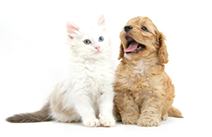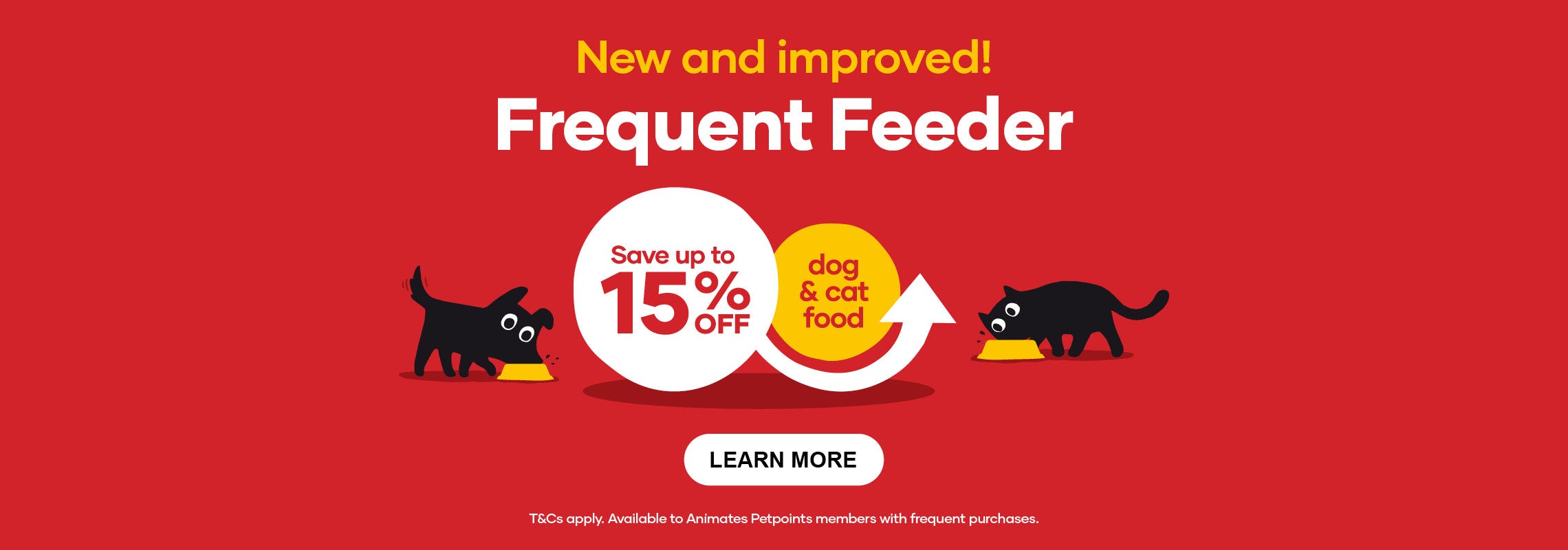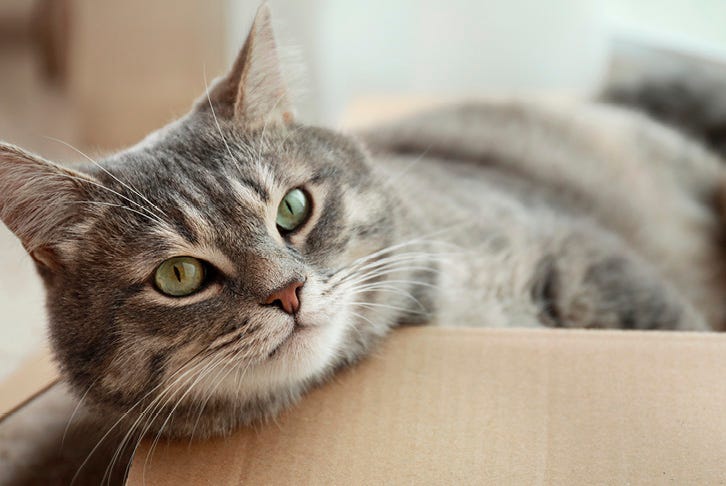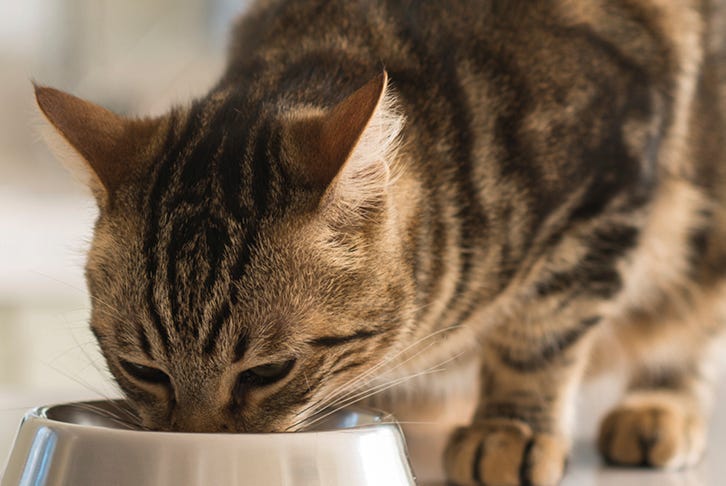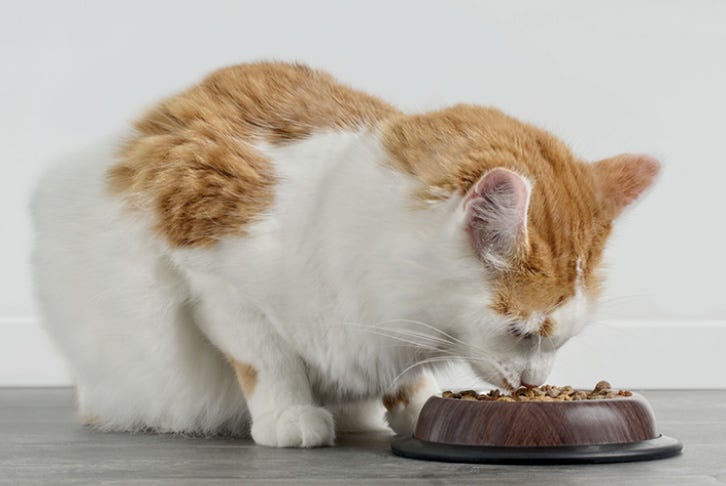Feeding your adult cat
A cat’s life stage or age is one of the most important considerations when choosing your cat’s food. As cats grow and get older, many things change - including their activity levels, energy requirements and their state of health.
Here's our nutrition guide for feeding adult cats (age 1 to 6 years) to help keep your feline friend in peak physical condition.
Cats in different phases of their life have varying nutritional needs. Once your kitten is 12 months old, they are now considered an adult, so you can slowly transition them to an adult food. To provide your cat with a complete and balanced diet, we recommend feeding your cat a Superior Nutrition adult cat food. Superior Nutrition cat foods are scientifically formulated to include the right balance of dietary protein, fats and oils, vitamins, minerals, and carbohydrates that your adult cat needs during this life stage.
To help you choose the best food for your adult cat, take into account the following factors:
1. Your cat’s age – choose a food made specifically for adult cats
In general, kitten food contains more fats, proteins and calories than adult cat food, so it's important to feed your cat a diet specially formulated for adult cats to help them maintain a healthy weight during adulthood. Adult cat diets are designed for adult teeth and can be calorie controlled, plus they are high in protein to support lean muscle and general health during their adult years. That said, you should avoid overfeeding by paying close attention to the feeding guide on the packet.
2. Your cat's lifestyle
Not all cats need the same levels of nutrients, so it’s important to consider your cat’s lifestyle and activity level when choosing their food. A cat spends most of its days roaming the neighborhood, may require a more calorie-dense and high protein 'outdoor' diet to support their active lifestyle. On the other hand, a cat that lives indoors in an apartment, for example, may spend more time sleeping, eating and grooming, rather than exercising. To help them maintain a healthy weight, indoor cats may require a ‘light’ option with less energy or an indoor cat formula, as well as plenty of cat toys to keep them moving.
In addition to being more sedentary, indoor-only cats tend to get more hairballs. To help reduce this hairball formation, indoor cat food formulas are often higher in fiber to help move hairballs through the gastrointestinal tract. This is often a problem in medium and long-haired cats as well.
3. Your cat's breed - different breeds have unique needs
From the slinky Siamese to the regal Ragdolls, every cat breed is loved for their distinct and unique characteristics. Taking these differences into careful consideration, breed-specific diets are specially formulated to meet the nutritional needs of purebred cats and support their unique attributes for optimal health.
4. Health requirements
Superior Nutrition cat foods are also available in ranges that cater to special health needs such as dental care, hairball control or weight management. Before switching your cat's food to a care nutrition diet or prescription diet, a proper vet diagnosis is essential. If you have any concerns about your cat's health, talk to your local Animates Vetcare clinic for dietary advice.
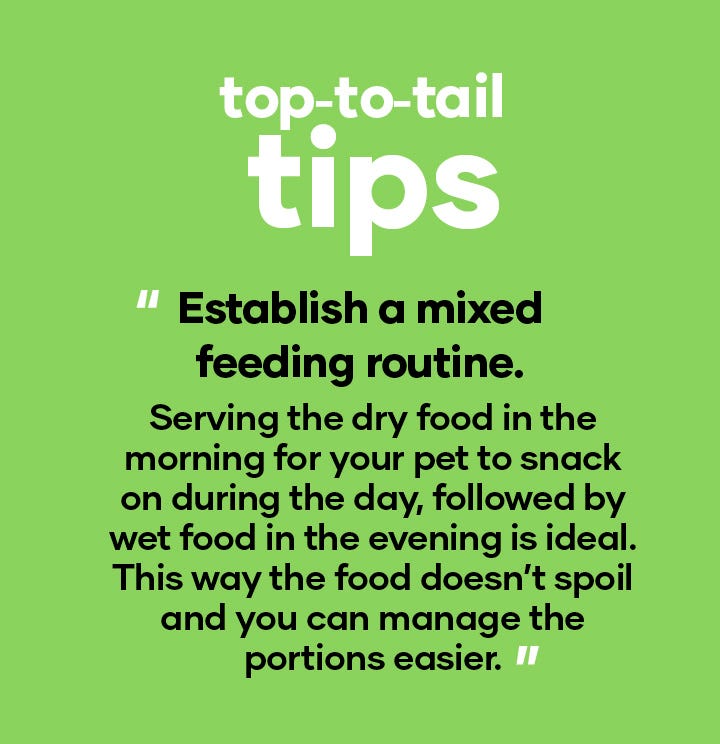
5. Wet food or dry food?
Feeding your cat a combination of both wet and dry food in their diet offers multiple health benefits. Since wet food has increased moisture content, it’s a great way to boost your pet’s daily water intake - as some pets may struggle to get enough hydration day-to-day, which is particularly important in summer or in pet’s that are prone to urinary tract infections disease (a common problem in cats).
Additionally, the high meat content and enticing meaty aroma of wet diets encourages palatability - so if your feline friend is a fussy eater, offering some wet food alongside their dry kibble can help encourage eating. Note: always consult with your vet if your senior pet has problems with their appetite or eating.
Transitioning your cat's diet
Once you’ve selected your cat’s new diet, we recommend a transition period for changing from their current food to a new food. This is best done gradually over 7 days and involves mixing the two kibbles together until your pet is solely on the new diet. If you notice any minor upsets, including diarrhoea or vomiting, you should stop the transition until this has settled.
At Animates, we believe your dog and cat will love their food so much that if they don’t...we’ll help find a replacement. That’s our taste guarantee.
If you're pet isn't satisfied with their new food all you need to do is...
- Bring the remaining food back to one of our stores
- Let one of our team members know the food wasn't quite right for your pet
- We'll help find a replacement food for your pet with one of equal value
Taste Guarantee, they'll love it or we'll replace it...guaranteed!
We’re here for you
If you need any more information about what to feed your cat, come in and have a chat with our friendly pet experts at your local Animates store. Our knowledgeable staff will help you choose a Superior Nutrition cat food to match your feline friend's age, lifestyle, breed or special health needs.
Cats in different phases of their life have varying nutritional needs. Once your kitten is 12 months old, they are now considered an adult, so you can slowly transition them to an adult food. To provide your cat with a complete and balanced diet, we recommend feeding your cat a Superior Nutrition adult cat food. Superior Nutrition cat foods are scientifically formulated to include the right balance of dietary protein, fats and oils, vitamins, minerals, and carbohydrates that your adult cat needs during this life stage.

To help you choose the best food for your adult cat, take into account the following factors:
1. Your cat’s age – choose a food made specifically for adult cats
In general, kitten food contains more fats, proteins and calories than adult cat food, so it's important to feed your cat a diet specially formulated for adult cats to help them maintain a healthy weight during adulthood. Adult cat diets are designed for adult teeth and can be calorie controlled, plus they are high in protein to support lean muscle and general health during their adult years. That said, you should avoid overfeeding by paying close attention to the feeding guide on the packet.
2. Your cat's lifestyle
Not all cats need the same levels of nutrients, so it’s important to consider your cat’s lifestyle and activity level when choosing their food. A cat spends most of its days roaming the neighborhood, may require a more calorie-dense and high protein 'outdoor' diet to support their active lifestyle. On the other hand, a cat that lives indoors in an apartment, for example, may spend more time sleeping, eating and grooming, rather than exercising. To help them maintain a healthy weight, indoor cats may require a ‘light’ option with less energy or an indoor cat formula, as well as plenty of cat toys to keep them moving.
In addition to being more sedentary, indoor-only cats tend to get more hairballs. To help reduce this hairball formation, indoor cat food formulas are often higher in fiber to help move hairballs through the gastrointestinal tract. This is often a problem in medium and long-haired cats as well.
3. Your cat's breed - different breeds have unique needs
From the slinky Siamese to the regal Ragdolls, every cat breed is loved for their distinct and unique characteristics. Taking these differences into careful consideration, breed-specific diets are specially formulated to meet the nutritional needs of purebred cats and support their unique attributes for optimal health.
4. Health requirements
Superior Nutrition cat foods are also available in ranges that cater to special health needs such as dental care, hairball control or weight management. Before switching your cat's food to a care nutrition diet or prescription diet, a proper vet diagnosis is essential. If you have any concerns about your cat's health, talk to your local Animates Vetcare clinic for dietary advice.

5. Wet food or dry food?
Feeding your cat a combination of both wet and dry food in their diet offers multiple health benefits. Since wet food has increased moisture content, it’s a great way to boost your pet’s daily water intake - as some pets may struggle to get enough hydration day-to-day, which is particularly important in summer or in pet’s that are prone to urinary tract infect
ions disease (a common problem in cats).
Additionally, the high meat content and enticing meaty aroma of wet diets encourages palatability - so if your feline friend is a fussy eater, offering some wet food alongside their dry kibble can help encourage eating. Note: always consult with your vet if your senior pet has problems with their appetite or eating.
Transitioning your cat's diet
Once you’ve selected your cat’s new diet, we recommend a transition period for changing from their current food to a new food. This is best done gradually over 7 days and involves mixing the two kibbles together until your pet is solely on the new diet. If you notice any minor upsets, including diarrhoea or vomiting, you should stop the transition until this has settled.
At Animates, we believe your dog and cat will love their food so much that if they don’t...we’ll help find a replacement. That’s our taste guarantee.
If you're pet isn't satisfied with their new food all you need to do is...
- Bring the remaining food back to one of our stores
- Let one of our team members know the food wasn't quite right for your pet
- We'll help find a replacement food for your pet with one of equal value
Taste Guarantee, they'll love it or we'll replace it...guaranteed!
We’re here for you
If you need any more information about what to feed your cat, come in and have a chat with our friendly pet experts at your local Animates store. Our knowledgeable staff will help you choose a Superior Nutrition cat food to match your feline friend's age, lifestyle, breed or special health needs.


